#Amazon Q Developer
Explore tagged Tumblr posts
Text
Agentic Coding Experience Introduced By Amazon Q Developer

Agentic Coding Practice
An agentic coding experience in Amazon Q Developer enhances the IDE.
Amazon Q Developer is a new, interactive, agentic coding experience in Visual Studio Code. Interactive coding enhances prompt-based elements of this experience. create code, create documentation, run tests, and evaluate changes with a natural, real-time collaborative companion.
Amazon Q Developer transforms how you develop and maintain code by providing explicit rationale for its suggestions and allowing you chose automatic or manual modifications. You use Amazon Q Developer CLI agent often and have witnessed how its chat interface simplifies software development. My daily coding has improved with an AI-powered CLI assistance a Q Chat away.
The new agentic coding experience in Amazon Q Developer's IDE works seamlessly with your local development environment. You can run bash commands, read and write files, and discuss work naturally. Amazon Q Developer accelerates development by knowing your codebase and aiding with complex tasks through natural discourse.
Look see it in action
Amazon Q Developer Free with AWS Builder ID user identification or Amazon Q Developer Pro, a paid membership service, are available.
Existing users should upgrade to the newest. Launch Amazon Q Developer in the IDE.
Select the Amazon Q icon in my IDE to enter the chat interface. A web application that translates Jupiter notebooks from the Amazon Nova sample repository into interactive applications may be created for this presentation.
Amazon Q Developer examines the README file, notebooks, notes, and other files in the chat folder. Located in the repository root of the instance.
Amazon Q Developer begins application construction following repository analysis. It requests permission to execute bash to create folders and files according to prompt conditions.
After organising folders, Amazon Q Developer generates the web app.
The application will finish shortly. Amazon Q Developer provides the application structure and deployment instructions, which may be turned into a README file during the conversation.
You encountered a problem when launching the app. Amazon Q chat can explain things in Spanish.
Amazon Q Developers can respond in Spanish with code changes and corrections!
After the suggested changes, the app worked. The new Amazon Nova interface lets you create, edit, and analyse photographs and videos.
The photos above show my application's output. You requested a Spanish video producing code, thus it presented the notification in Spanish.
Know something
Natural language speaking Amazon Q Developer IDE supports Mandarin, French, German, Italian, Japanese, Spanish, Korean, Hindi, and Portuguese.
Understanding and cooperation The system analyses your files, documentation, and repository structure and lets you naturally interface with your local development environment. This deep awareness allows for more accurate and contextual development help.
Control and transparency Amazon Q Developer gives you complete control over the development process with frequent progress notifications and automatic code modifications or step-by-step evaluation.
Accessibility Visual Studio Code gets interactive, agentic coding from Amazon Q Developer. Cost Amazon Q Developer Free and Pro Tier clients can use agentic chat in the IDE for free. The Amazon Q Developer price page has further information.
#technology#technews#govindhtech#news#technologynews#Agentic Coding Experience#Agentic Coding#Coding Experience#Amazon Q Developer#Q Developer#integrated development environments
0 notes
Text

Deadline: Nicholas Galitzine & Taylor Zakhar Perez Returning For ‘Red, White & Royal Blue’ Sequel
Following its huge success with Red, White & Royal Blue, the adaptation of Casey McQuiston’s bestseller, which last year came in as one of its top three most-watched romantic comedies of all time, Amazon MGM Studios has greenlighted development on a sequel, with stars Nicholas Galitzine and Taylor Zakhar Perez set to return.
After making his feature debut with the first film, Matthew López has returned to write the script for the sequel — this time, alongside McQuiston. Berlanti Schechter Films’ Greg Berlanti and Sarah Schechter will return to produce the film, joined by the banner’s Michael McGrath, as well as López. McQuiston will executive produce.
Details as to the sequel’s plot are under wraps. News of its development was announced during a Q&A tonight following a screening of the film at the Culver Theater, which came ahead of Amazon’s inaugural upfront presentation, scheduled for May 14.
2K notes
·
View notes
Text
this q&a with the showrunners and charlie/morfydd revived my hope and excitment for s3!
if haladriel continues being the heart of the story, if sauron and galadriel share screen and their dynamic continues to develop, if galadriel is in the spotlight and is still tempted by sauron and power and the darkness and grows into a leader,
then i don't care about anything else! amazon prime can have all my money!!! i will single handedly do the marketing for this show!
feels good to finally feel good about this show's future!
#haladriel#saurondriel#sauron x galadriel#the rings of power#rings of power#sauron#galadriel#trop#galadriel x halbrand#rop
75 notes
·
View notes
Text
Luffy vs. Zoro at Whiskey Peak
Unpopular opinion maybe, but the Luffy vs. Zoro clash in Whiskey Peak made sense for their characters. You could even argue that it was bound to happen, given their personalities.
Luffy likes the people who feed him. In the the face of their suffering, no matter who's responsible, he's too angry to concern himself with the reasons behind it. Zoro, on the other hand, prefers to handle things independently without saying much about it, especially if it means his crew gets to enjoy themselves a little longer
So it's not really surprising that Luffy would be blindsided by finding their hosts cut up by his swordsman, and that this would send him flying into a fit of rage. If he's never paused to listen to context or backstories before now, why would he start here? And of course, Zoro is not the type to back down from a challenge. He will match Luffy's energy and respond in kind
"But if Luffy were a good captain, he would have stopped to listen to Zoro's side of the story." Vivi tells him he's a bad captain two arcs later, precisely because of this kind of behavior. It clearly leaves an impression on Luffy, and we see he's grown into a better leader by the time he reaches Amazon Lily. (Almost as if Oda set all this development up on purpose with Whiskey Peak. HMM...)
"But Luffy refused to believe that Nami had killed Usopp in Arlong Park." This argument is like comparing apples to oranges. Nami did not actually do the murder that Johnny and Yosaku claim they saw, nor is she capable of killing people in cold blood. Of course Luffy isn't going to believe Nami killed Usopp based on hearsay. But in Whiskey Peak, Zoro did cut those bounty hunters. Luffy sees the evidence for himself, and he knows the carnage Zoro is capable of inflicting once he puts his mind to it. There is no denying what happened. Nothing other than Zoro saying "someone else did this" (or Nami knocking the soul out of him) was going to stop Luffy from going ballistic
"Why would Luffy fight so hard to recruit Zoro into his crew, firmly believing that he wasn't a bad person, only to later attack him because he believed Zoro was capable of harming 'innocent' people?" Because the fight was never about whether their hosts were "innocent" or not, not really. Their fight was about what Zoro did (assaulting the ones who fed them), and how those actions made Luffy feel (mad as hell, because these people FED THEM) For Luffy, context did not actually matter at that moment in time because, for him, "they fed me" unequivocally means "they're my friend", full stop This is even shown again in Mocktown! Both when Luffy unquestioningly eats an apple from Doc Q, and when Bellamy buys Luffy a drink in Mocktown. In the first case, Luffy only lived because he was lucky. And in the second case, he assumes Bellamy is a good person despite all evidence to the contrary, only to have his face brutally smashed into the bartop by Bellamy. Luffy is shockingly bad at reading people who try to feed him.
Luffy has interpersonal conflicts with all the core members from East Blue at different times. The fight with Zoro is the only one instigated by Luffy. But surprisingly, their fight highlights their similarities instead of their differences. They still fight equally and work together against BW agents who try to interfere with their fight.

I think that's what Oda wanted to showcase with this scene.
In short, Luffy's initial anger stemmed from his protectiveness towards those who have fed him, while Zoro's actions were driven by his dedication to the crew and subsequent refusal to back down from Luffy's challenge. It was a clash resulting from miscommunication and misunderstanding, something that is not typically a problem for them — until it suddenly becomes one When all is said and done, they're both quick to forgive and forget. This, too, is fitting for both their characters. From that point onward, Zoro continues to demonstrate that Luffy's trust is not misplaced. And Luffy never, ever doubts Zoro again after this
#I see a lot of ppl claim Luffy vs. Zoro was due to pressure from editors#but nobody can cite sources for this#I think it's much more likely that Oda genuinely wanted to show them fighting#to set up a gradual path of growth for Luffy in Act I#and also to highlight how Luffy and Zoro are on the same wavelength; even when they're trying to kill each other#plus that fight was funny as hell idc what anyone else says#also it's totally fine to dislike this scene b/c of the tonal whiplash#or b/c you don't like tropes based off of miscommunication#but anyone who says Luffy was ooc in this scene#or that this chapter only happened because luffy doesn't trust zoro#and that luffy would've been 100% fine if NAMI had killed the bounty hunters b/c he would've just ~trusted~ her#is wrong! lmao#one piece#monkey d. luffy#roronoa zoro#whiskey peak#meta#my meta#text posts#long post#zolu#kinda sorta
41 notes
·
View notes
Text
007 First Light, IO Interactive’s James Bond action-adventure game revealed
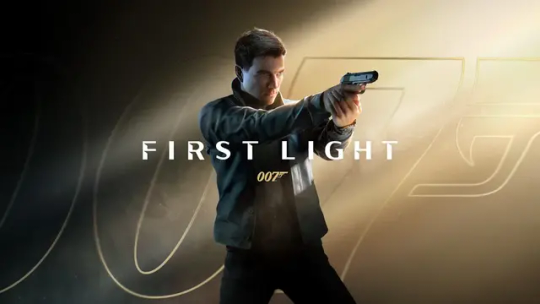
youtube
007’s Highly Anticipated Return to Video Games Features a Standalone Re-Imagining of James Bond’s Origin Crafted by IO Interactive
IO Interactive, the award-winning developer and publisher behind the globally-acclaimed HITMAN franchise, and Amazon MGM Studios today officially unveiled 007 First Light, a story-driven action-adventure game featuring a standalone original, re-imagined origin story of a young James Bond. Coming in 2026, 007 First Light will be available on PlayStation 5, Xbox Series X|S, Nintendo Switch 2, and PC on Steam and the Epic Game Store.
This unique, standalone original story has been created by the passionate development team at IO Interactive. In 007 First Light, players will step into the shoes of a young Bond, a promising yet rebellious Royal Navy air crewman who is recruited into MI6. His sharp instincts and heroism in combat propel him into the agency’s rigorous training program for the once revered, and newly resurrected, elite 00 section.
For the first time ever, fans will be able to experience Bond’s ascent at MI6 from a young 26-year-old recruit into a full-fledged spy – immersing them in the exotic and dangerous world of espionage captured in the films. Bond’s adventures will take players all around the globe, coming face to face with allies and foes (or in some cases, both), while choosing how they overcome obstacles and challenges, whether it be with brute force, cunning guile, or charming wit.
"With 25 years of experience in creating captivating action-adventure games with the HITMAN franchise, our studio has been energized with this monumental opportunity in harnessing that expertise in bringing 007 back to video games,” said Hakan Abrak, CEO of IO Interactive. “We’re pouring our energy and passion for the franchise into creating a cinematic adventure that pushes the boundaries of what a James Bond game can be, while telling a fresh, new story. We can’t wait for players and fans to discover an experience tailor-made for them.”
007 First Light is a third-person action-adventure game that blends IO Interactive’s signature stealth and action gameplay mechanics with the world of Bond and MI6. Players will choose how to utilize Bond’s unique set of skills in combat, relationships, as well as the latest in Q’s technological gadgetry in his ascent to becoming 007. Along the way, they will meet familiar faces like M, Q, and Moneypenny, and be introduced to new characters including Bond’s mentor John Greenway, the mysterious Isola, as well as a whole new cast of villains.
007 First Light was revealed today during Sony’s PlayStation State of Play, with a trailer that can be viewed HERE. The game is available to wishlist now for PlayStation 5, Xbox Series X|S, Nintendo Switch 2 and for PC on Steam and Epic Games Store and Amazon.com. Players who sign up for an IOI account now (HERE) will receive an exclusive in-game item for 007 First Light at the game’s launch, along with additional rewards in the future. For more information, please visit our official website for more: 007FirstLightGame.com or follow us on X, Instagram, TikTok, Twitch, Facebook, Threads, Reddit, Bluesky, and YouTube.
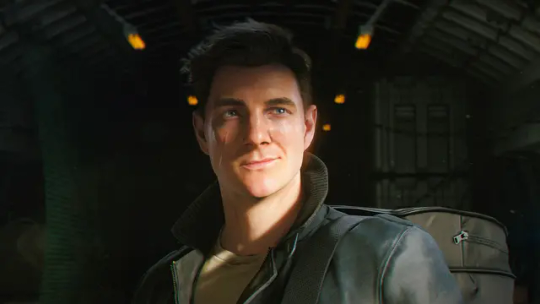




#007 first light#james bond#io interactive#video games#gaming#gaming news#trailer#trailers#screenshots#Youtube
3 notes
·
View notes
Text
cuban-style picadillo: remix
posting this for those who want it. it was in a reply, but i made some changes to the base recipe that i enjoyed a lot, so i want to leave them somewhere.
tools a pot with a lid (or a very big sauté pan with a lid), something to stir and break raw meat up with (spoon), a spare bowl for the meat, a colander or some kind of strainer to quickly drain meat with ingredients
a neutral oil (avocado?), 2 tbsp
2 tsp of adobo (with pepper) seasoning, i like iberia
1 tsp of sazón seasoning (w/ achiote and culantro), i use badía
1 tsp of onion powder, i use badía
2 lb of ground beef (85/15 is good here)
half a large white onion, smaller dice
one green or red bell pepper, smaller dice
1.5 tbsp tomato paste
5 cloves of garlic, minced
one 15oz can of tomato sauce
2 tsp capers
1/2 cup green pimento-stuffed olives
1 tbsp worcestershire sauce
1 tsp maggi seasoning
2 bay leaves
salt and pepper to adjust seasoning
instructions
get all of the listed ingredients ready and chopped and in discrete places before you get started. mise en place! don't let your ADHD win.
get your pot/pan up to medium-high heat. add 1tbsp oil.
once it's hot, add your meat, add your sazón, adobo and onion powder over the top of it, and then start mixing around to break it up and let it brown. i like to let it rest undisturbed so one side gets a little bit more color and some fond develops on the pan.
the meat will let out a lot of fat and water. drain the meat and set it aside for a sec. add the other tbsp of oil to your pot/pan.
add the onions and peppers (and potatoes if you're using them).
cook until the onions are a little translucent, about 4 minutes, stirring them around a bit.
add the garlic and the tomato paste and let that cook a little bit in there, about 1 minute, stirring it around.
add the meat back and add the worcestershire and maggi seasoning to everything and mix it up. give it like a minute for everything to get the tomato paste color all mixed up.
add the tomato sauce, then the capers, olives and the bay leaves. mix it all up.
let this start bubbling before lowering the temperature to medium-low and cover the pot.
let it simmer for 10 minutes then stir. repeat twice; you want a total of 30 minutes on top.
once it's done, serve it along with your favorite rice.

this is how it'll look before you give it the 30 minutes, more or less. after this, though, it should be pretty reddish and pretty delicious.
if you want to ease back on the salt, you can try cutting the maggi seasoning, but it feels like it was the little touch that sent it over the top for me. you could try replacing it with low sodium soy sauce, but i am not sure how effective that'd be
FAQ.
Q. where are the raisins?
A. shut the fuck up.
Q. how can i make this more like the more traditional version?
A. remove the worcestershire and maggi seasoning. remove the sazón. just use the adobo, and add a little salt and pepper to taste. you can add a little oregano (i don't).
Q. i live somewhere that makes it hard to find some of these latino powdered seasonings. where can i find 'em?
you're in luck! amazon seems to have 'em.
badía 7oz sazón: https://amzn.to/3B9FdFk iberia 16oz adobo, no pepper: https://amzn.to/4dZ4bWu badía bay leaves (.17oz): https://amzn.to/3Xquq1d
i can't find a reasonable amount of the adobo with pepper, so add a few cranks of pepper if you use this one; about a tsp is enough. i know some people have never seen bay leaves either, so there you go.
4 notes
·
View notes
Text
F.A.Q. The End Of The World As We Know It: Tales From Stephen King’s The Stand
What follows are the Frequently Asked Questions for THE END OF THE WORLD AS WE KNOW IT: TALES OF STEPHEN KING’S THE STAND — a forthcoming anthology edited by myself and Christopher Golden. Please bookmark this page and check back from time to time, as I will update things as they develop.
Q: What is this, exactly?
A: An original short story anthology based on master storyteller Stephen King’s #1 New York Times bestselling classic The Stand!
Since its initial publication in 1978, The Stand has been considered Stephen King’s seminal masterpiece of apocalyptic fiction, with millions of copies sold and adapted twice for television. Although there are other extraordinary works exploring the unraveling of human society, none have been as influential as this iconic novel—generations of writers have been impacted by its dark yet ultimately hopeful vision of the end and new beginning of civilization, and its stunning array of characters.
Now for the first time, Stephen King has fully authorized a return to the harrowing world of The Stand through this original short story anthology as presented by award-winning authors and editors Christopher Golden and Brian Keene. Bringing together some of today’s greatest and most visionary writers, The End of the World As We Know It features unforgettable, all-new stories set during and after (and some perhaps long after) the events of The Stand—brilliant, terrifying, and painfully human tales that will resonate with readers everywhere as an essential companion to the classic, bestselling novel.
Q: Who is in the book?
A: Featuring an introduction by Stephen King, a foreword by Christopher Golden, and an afterword by Brian Keene. Contributors include Wayne Brady and Maurice Broaddus, Poppy Z. Brite, Somer Canon, C. Robert Cargill, Nat Cassidy, V. Castro, Richard Chizmar, S. A. Cosby, Tananarive Due and Steven Barnes, Meg Gardiner, Gabino Iglesias, Jonathan Janz, Alma Katsu, Caroline Kepnes, Michael Koryta, Sarah Langan, Joe R. Lansdale, Tim Lebbon, Josh Malerman, Ronald Malfi, Usman T. Malik, Premee Mohamed, Cynthia Pelayo, Hailey Piper, David J. Schow, Alex Segura, Bryan Smith, Paul Tremblay, Catherynne M. Valente, Bev Vincent, Catriona Ward, Chuck Wendig, Wrath James White, and Rio Youers.
Q: Who is the publisher?
A: Gallery Books, a division of Simon & Schuster, are publishing the hardcover, paperback, eBook, and audiobook editions in North America. Various foriegn language editions will be published by various foreign publishers.
Q: So there will be hardcover, paperback, eBook, and audiobook editions?
A: Yes. The hardcover and the eBook are already up for preorder via Amazon, Barnes & Noble, and all other booksellers. (Note: as of 10/16/24 Amazon’s hardcover link does not yet work, so check back often or use a different bookseller). You can also preorder from Overlook Connection and get a limited edition dust jacket by Glenn Chadbourne, as well as other cool collectibles.
Q: What’s the cost?
A: The hardcover is listed at $35. The eBook is listed at $16.99. The hardcover that comes with the extra dust jacket from Overlook is $69.95.
Q: Will there be a signed limited edition or a special collector’s edition of some kind?
A: Probably, but it is too early to say for sure.
Q: You listed the contributors above. Anything more you can tell us about the actual stories?
A: Sure. The book is split into four parts. Part One takes place during the initial spread of Captain Trips and the dreams. Part Two takes place between the migrations to Boulder and Las Vegas and the Hand of God moment. Part Three takes place after the conclusion of the novel, detailing the world in the decades that follow. And Part Four takes place… well, that would involve major spoilers.
Here is the finalized Table of Contents:
Foreword by Christopher Golden
Introduction by Stephen King
PART ONE: DOWN WITH THE SICKNESS
Room 24 by Caroline Kepnes The Tripps by Wrath James White Bright Light City by Meg Gardiner Every Dog Has Its Day by Bryan Smith Lockdown by Bev Vincent In A Pig’s Eye by Joe R. Lansdale Lenora by Jonathan Janz The Hope Boat by Gabino Iglesias Wrong Fucking Place, Wrong Fucking Time by C. Robert Cargill Prey Instinct by Hailey Piper Grace by Tim Lebbon Moving Day by Richard Chizmar La Mala Horla by Alex Segura The African Painted Dog by Catriona Ward Till Human Voices Wake Us, And We Drown by Poppy Z. Brite Kovach’s Last Case by Michael Koryta Make Your Own Way by Alma Katsu
PART TWO: THE LONG WALK
I Love The Dead by Josh Malerman Milagros by Cynthia Pelayo The Legion of Swine by S.A. Cosby Keep The Devil Down by Rio Youers Across The Pond by V Castro The Boat Man by Tananarive Due and Steven Barnes The Story I Tell Is the Story of Some of Us by Paul Tremblay The Mosque at the End of the World by Usman T. Malik Abigail’s Gethsemane by Wayne Brady and Maurice Broaddus
PART THREE: LIFE WAS SUCH A WHEEL
He’s A Righteous Man by Ronald Malfi Awaiting Orders In Flaggston by Somer Canon Grand Junction by Chuck Wendig Hunted to Extinction by Premee Mohamed Came The Last Night of Sadness by Catherynne M. Valente The Devil’s Children by Sarah Langan
PART FOUR: OTHER WORLDS THAN THESE
Walk On Gilded Splinters by David J. Schow The Unfortunate Convalescence of the SuperLawyer by Nat Cassidy
Afterword by Brian Keene
3 notes
·
View notes
Text
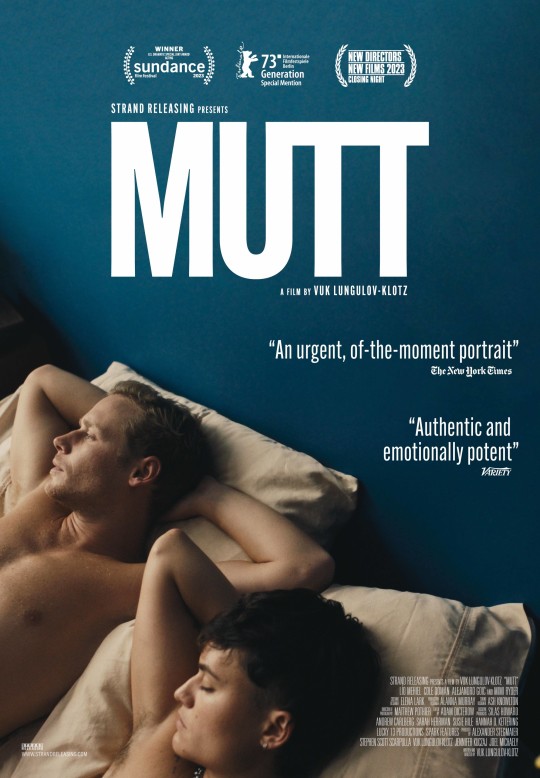
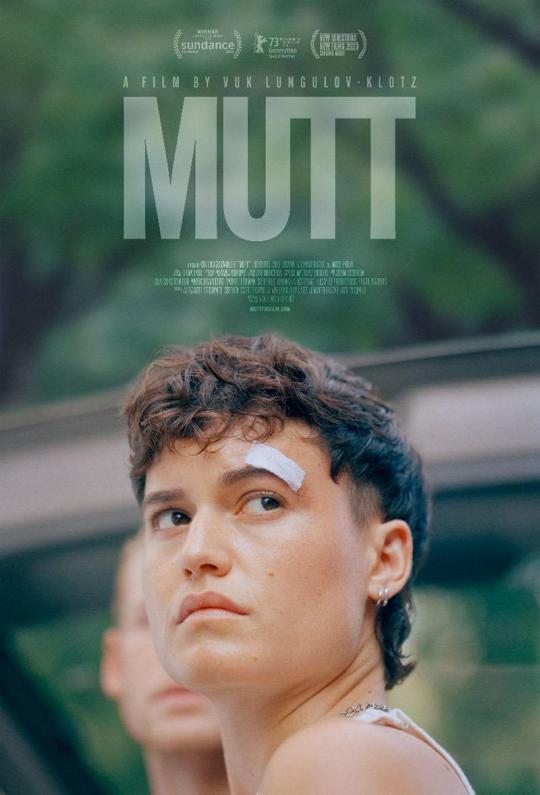
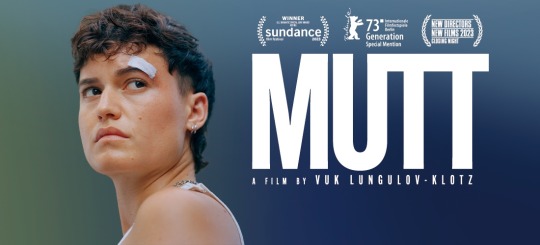
Mutt 2023
Fena, a young trans guy bustling through life in New York City, is afflicted with an incessantly challenging day that resurrects ghosts from his past. Laundromats, subway turnstiles, and airport transfers are the hectic background to this emotional drama that overlaps past, present, and future. Settling the disharmony of transitional upheaval in relationships familial, romantic, and platonic is Fena2s task at hand, and his resulting juggling act is equal parts skillful, fumbling, and honest. In negotiating his obliqueness, the poignant moments he finds between himself and others as the distance between them closes are warm, true, and touching
Q&A with MUTT Filmmaker Vuk Lungulov-Klotz and Stars Lío Mehiel, Cole Doman & MiMi Ryder
Chilean and Serbian immigrants, he was raised between Chile, the US, and Serbia. As a transgender storyteller, he hopes to expand queer narratives. His work focuses on intimate moments we often miss if we're not looking. Mutt is his debut feature film. With his feature film script, MUTT, he is an alum of the Sundance Institute Labs, the Inside Out Financing Forum, and was a top five finalist for the Tribeca / AT&T Untold Stories Grant. His award winning trans-themed short film, "Still Liam," played at festivals internationally and earned the attention of celebrated queer filmmakers Ira Sachs and Silas Howard, who have both become mentors. Vuk is also an alum of the Ryan Murphy HALF Initiative Program, where he completed a mentorship under director Janet Mock on the FX series POSE. He lives in Brooklyn, NY.

Lío Mehiel is a Puerto Rican and Greek artist, actor, and filmmaker. Their work spans film, television, multimedia installation, theater, and events. They are fascinated by the inherent contradiction of the trans experience — one deeply rooted in the body while also transcending beyond the body. Lío began their career as a professional salsa dancer and child actor on Broadway. They can now be seen on shows like WeCrashed (Apple+) and Tales of the City (Netflix). MUTT is their feature film debut. As a filmmaker, Lío produced Chaperone, a queer short film which premiered at Sundance 2022. They wrote, directed, produced, and starred in Disforia, a short film which premiered at Outfest Film Festival in 2018. They are now stuck inside of a psychomagic act with this story as they write the feature script version and confront their own medical transition. As an installation artist, their immersive piece Arcade Amerikana was included in the list of 10 Best Immersive Shows in NYC by Time Out and GOTHAMIST. Lío is currently the producer and creative director of Angels, a developing collection of stone sculptures of transgender humans. The works were first featured as part of a pop-up installation at Outfest LA in 2022, and will be debuted in full at SIZED Gallery LA in 2023. Lío is a co-founder of Voyeur Productions with Russell Kahn and Dulcinee DeGuere. They attended Northwestern University, and are an alumni of the Emerge NYC residency program for artists and activists. Photo credit: Jordan Rossi
Cole Doman is a trained stage and film actor living in Brooklyn, NY. During his time in Chicago, he studied at the School at Steppenwolf under Amy Morton, Tarell Alvin McCraney, Michael Patrick Thornton, and more. Chris Jones of the Chicago Tribune named Cole among the "Hot New Faces of Chicago Theater" in 2016. He made his film debut as the titular role in the critically acclaimed HENRY GAMBLE'S BIRTHDAY PARTY directed by Stephen Cone. He has profiles with IndieWire, Brooklyn Magazine, OUT, Milk.xyz, and was featured as one of "Best Breakout Performances of 2016" by The Film Stage. He can also be seen in Alan Ball's UNCLE FRANK (Sundance 2020, Amazon Studios) as young Frank Bledsoe played by Paul Bettany. On television he has appeared in Let the Right One In, Gossip Girl, Modern Family, Law & Order: SVU, Chicago PD, Equal, and Shameless. He developed & stars in the short film Starfuckers (MUBI) directed by Antonio Marziale which was presented in competition at Sundance Film Festival, Berlinale, and Telluride Film Festival. Other forthcoming films include: Matt Fifer’s sophomore feature TREATMENT for AMC’s Shudder and Zia Anger’s debut feature MY FIRST FILM for MUBI. Mostrecently, he starred in the world premiere of Your Own Personal Exegesis by Julia May Jonas at Lincoln Center Theatre, directed by Annie Tippe, for which his performance was lauded by The New York Times and even cartooned by The New Yorker.
7 notes
·
View notes
Text
Empowering Your Career: The Art of Choosing the Best AWS Online Training
In the dynamic landscape of cloud computing, Amazon Web Services (AWS) stands tall as a leader, empowering businesses with scalable and reliable solutions. With AWS Training in Hyderabad, professionals can gain the skills and knowledge needed to harness the capabilities of AWS for diverse applications and industries. As the demand for AWS expertise continues to surge, selecting the right online training class becomes a pivotal decision for professionals seeking to enhance their skills. Let's explore the key criteria that can guide you in identifying the best online training for AWS.
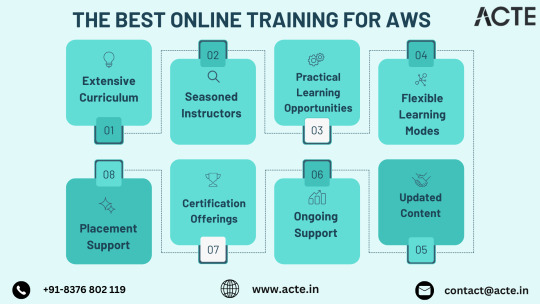
Extensive Curriculum for In-Depth Learning:
To embark on a successful AWS journey, prioritize courses with a comprehensive and up-to-date curriculum. A well-structured course should cover fundamental AWS services, architecture, security, and other critical topics. The goal is to gain a holistic understanding of AWS, enabling you to navigate its ecosystem with confidence.
Seasoned Instructors:
The quality of instruction plays a crucial role in the effectiveness of any training program. Look for courses facilitated by experienced instructors who bring real-world insights and industry knowledge. Seasoned instructors contribute significantly to a rich and engaging learning experience.
Practical Learning Opportunities:
Theory alone isn't sufficient in mastering AWS. Seek courses that offer practical learning opportunities, including hands-on assignments, labs, and real-world projects. The ability to apply theoretical knowledge in practical scenarios enhances your problem-solving skills and solidifies your understanding.
Flexible Learning Modes for Convenience:
Every learner has unique preferences and schedules. Opt for a training provider that offers flexibility in learning modes, allowing you to choose between online and classroom sessions. This adaptability ensures that the training aligns seamlessly with your schedule and learning preferences.
Placement Support for Career Advancement:
A valuable training program goes beyond imparting knowledge; it helps you transition to the professional realm. Consider courses that provide placement assistance, including resume-building sessions and mock interviews. This support enhances your readiness for AWS-related job opportunities.

Certification Offerings for Professional Validation:
A recognized certification is a tangible testament to your AWS proficiency. Ensure that the training program offers a certification upon completion, and verify its reputation within the industry. A well-regarded certification enhances your professional credibility and opens doors to career advancements. To master the intricacies of AWS and unlock its full potential, individuals can benefit from enrolling in the Top AWS Training Institute.
Interactive Learning Environment for Engagement:
Learning is most effective in an interactive environment. Look for training providers that foster engagement through discussions, Q&A sessions, and collaborative activities. Interaction with both instructors and fellow learners enriches the learning experience.
Ongoing Support for Continued Learning:
Learning is an ongoing journey. Choose a training program that provides post-completion support through forums, community platforms, and additional learning resources. Ongoing support ensures that you can seek guidance as you encounter new challenges in your AWS endeavors.
Updated Content to Reflect Industry Advancements:
AWS is a rapidly evolving ecosystem. Confirm that the training class consistently updates its content to reflect the latest industry advancements and incorporate new AWS services. Staying abreast of the latest developments is crucial for maintaining your relevance in the field.
Positive Reviews and Reputation:
The experiences of past participants are indicative of a training program's effectiveness. Look for positive reviews and testimonials, and consider the overall reputation of the training provider. A well-regarded training class is more likely to deliver on its promises and provide a positive learning experience.
Before enrolling in an AWS training class, conduct a thorough review of the program details, including duration, schedule, fees, and additional offerings. By aligning the course with your learning goals and preferences, you set yourself on a path to unlocking the vast potential that AWS has to offer. Choose wisely, invest in your education, and let AWS become the cornerstone of your success in cloud computing.
2 notes
·
View notes
Text
Who's Who In The DC Universe #1: Adam Strange, Aegeus, Air Wave I, Air Wave II
Adam Strange by Carmine Infantino and Murphy Anderson
Adam was fleeing from South American natives when he was struck by the Zeta Beam, a “beam of energy sent from the planet Rann in hopes of communicating” with Earth
The Zeta Beam teleported Adam to Rann instead
Adam meets a scientist named Sardath and Alanna, his daughter
Adam became the Rann’s first citizen and savior and later married Alanna
Rann is a planet of contradictions: “Some of its divided city-states possesses science far in advance of Earth, while others exist in almost barbaric splendor”
Adam teleports back to Earth whenever the Zeta Beam wears off, he then has to calculate where the next Zeta Beam will strike (always south of the equator) to return to Rann
I’ve always loved Adam Strange. How can you not enjoy an archaeologist who has space adventures? I’d recommend the Adam Strange miniseries that came out shortly before Infinite Crisis (no, not the Rann-Thanagar War mini-series, the “Adam Strange” mini-series that preceded it. It was excellent!
Aegeus by Don Heck
A Greek national who was planning acts of terrorism when he met Bellerophon (yes, the one from Greek mythology). Bellerophon had become an Olympian-hater so he gave Aegeus a magical bow and arrow, six daggers of Vulcan (shouldn’t he be called Hephaestus (?), and Pegasus. Aegeus then decided to pick a fight with Wonder Woman and the Amazons. It doesn’t end well for him.
For such a long-running character, Wonder Woman’s rogue gallery does not have the depth of a Flash, a Batman, or a Spider-Man. Aegeus is D list. Has he even been seen post-Crisis?
Air-Wave I and Air Wave II by Alex Saviuk & Dick Giordano
Did you know Hal Jordan’s cousins were heroes? And not of the Green Lantern variety?
Lawrence (Larry) Jordan was a native of Earth-2. He developed a helmet and belt that allowed him to into any radio wave, project his voice through radio waves, among other abilities. He created the Air Wave persona, battled nazis, and joined the All-Star Squadron.
Larry traveled to Earth-1 under “unknown circumstances”, became a district attorney, married a woman named Helen, and has a son named Harold (Hal). No, not that Hal Jordan.
Criminals later shot and killed Larry as revenge against his crusades as a district attorney.
Hal inherited the Air Wave equipment and persona from his father.
His mother had a breakdown after the murder of his father and was confined to an institution. Hal was taken in by his cousins, Jack and Jan Jordan.
Hal received some coaching on heroics from his cousin Hal (yes, that Hal), Green Arrow, and Black Canary.
The only appearances of either Air Wave that I’ve read were when Larry or Hal made appearances in the All-Star Squadron or JSA series. They were okay.
I suppose a quick detour is needed for younger readers about the various earths that will be mentioned in the Who’s Who:
Earth-1: The earth of the Silver Age heroes to 1985/1986: the home of Barry, Hal, Katar, Shayera, etc
Earth-2: The home of the Golden Age/original versions of DC’s iconic heroes: Alan Scott, Jay Garrick, Carter Hall. Also, the home of the Justice Society, All-Star Squadron, Infinity Inc, etc. Bruce, Clark, and Diana among other will have versions of themselves on both Earth-1 and Earth-2. The difference is the Earth-2 versions can age, marry, and have children while the Earth-1 versions stayed young and single.
There were multiple other earths, this is off the top of my head so the designations may be wrong, but a few more were:4
Earth-3: The home of the Crime Syndicate (reverse world where the Justice League are evil, and the villains are the good guys)
Earth-F: Home of the Fawcett heroes
Earth-C: Home of the Charlton heroes
Earth-Q: Home of the Quality heroes
DC simply created another earth when they bought out another company and then plopped the newly acquired characters on it rather than try to insert the characters on a prior earth. Crossovers between earths were frequent. DC eventually decided the continuity was too complicated and thus the Crisis on Infinite Earths was born. I don’t know, I was nine years old when the Crisis began and I understood the continuity just fine, so how complicated could it be?
#DC Comics#DCU#Adam Strange#Aegeus#Rann#Bellerophon#Wonder Woman#Air Wave#Larry Jordan#Hal Jordan#All-Star Squadron#Green Lantern#Who's Who In The DC Universe
4 notes
·
View notes
Text
By Lambert Strether of Corrente.
This post was motivated by “The Obama Factor“, a long and rambling Q&A between Pulitzer-winning historian and Obama biographer David Garrow, and David Samuels, the Tablet’s Literary Editor. Garrow and Samuels answer the question posed in the headline in the affirmative; basically, “quite possibly, yes.” Spoiler: By Betteridge’s Law, my answer is “No,” but with significant qualifications.
Most of the reactions to “The Obama Factor” — which focuses primarily on the irresistible rise of a fabulist creep who had written not one but two autobiographies by the age of 47, both in election years — have focused on Obama’s sensational fantasy life. In fact, I can only find serious reaction pieces from FOX and the New York Post; nothing from the other side of the aisle at all, and since the piece has been out for two weeks, I assume there won’t be (and if it were easy, the takedowns and the dogpiling would already have happened). Nobody seems to have focused on the most provocative part of “The Obama Factor”: Why Obama remained in Washington, DC, bought a mansion, and what he’s been doing with his time there[1]. In this post, I will take a first cut at explaining that.
I will first look at Obama’s neighborhood: Kalorama. Then I will look at his mansion, and what he is known to have done there. I will then present a great slab of Garrow and Samuels, who present the thesis that Obama is running a shadow government long form. I will conclude by briefly critiquing that thesis.
The Neighborhood: Kalorama
Here is a map[2] of Kalorama:
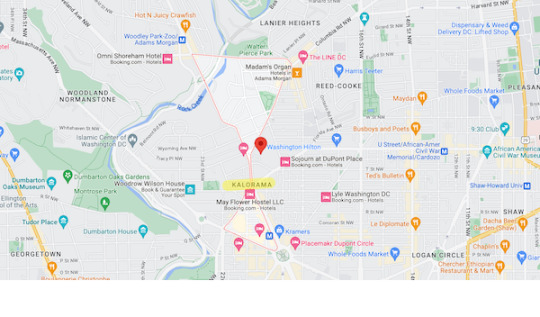
From Washington Socialist:
As locals will remind you, Kalorama comprises two separate neighborhoods: Kalorama Heights (also known as Sheridan-Kalorama) and, to its northeast, Kalorama Triangle.
The Obamas live to the Northeast, in the Kalorama Triangle. Kalorama has always been full of rich people:
Kalorama emerged relatively late as central DC neighborhoods went and was not extensively developed until the very end of the 19th century. It quickly attracted the wealthy and well-connected who built or purchased lavish mansions or fashionable rowhouses.
But now Kalorama is full of nouveaux riche[3] as well. From Trulia, “The Real Estate Voyeur’s Guide to Kalorama Heights, Washington D.C.’s Most Bipartisan Neighborhood“:
Shortly after the 2016 presidential election, Kalorama, Washington D.C.—a small and tranquil neighborhood located northwest of Dupont Circle—suddenly transformed into the epicenter of wealthy and political elites in D.C. First former President Barack Obama and wife Michelle announced they were moving into an 8,200 square-foot home in the area (which they’ve confirmed they are buying). Next, Amazon founder and Washington Post owner Jeff Bezos purchased a $23 million Kalorama house—the largest private home in the entire city. Earlier this year, Secretary of State Rex Tillerson purchased a $5.5 million property. And most recently—and prominently—current First Family members Ivanka Trump and husband Jared Kushner began renting a 6,870 square-foot property in the neighborhood.
(Bezos is the dude with twenty-five bathrooms; Jared and Ivanka are already fighting with the neighbors.)
Kalorama is also full of embassies. From the Washington Diplomat:
[There are] 28 embassies in Washington’s well-heeled Kalorama neighborhood…. Embassies there include Algeria, Belize, Estonia, Greece, Japan, Latvia, Slovenia, Turkey, Madagascar, Mali and Syria. A variety of ambassador residences also call the tony neighborhood home — among them Afghanistan, the Netherlands and Portugal. Mostly, it’s simply a friendly neighborhood, European Union Ambassador David O’Sullivan said. The European Union has had a residence in Kalorama since 1972, and he looks forward to socializing with the new residents…. Maguy Maccario Doyle, Monaco’s ambassador to the U.S., has not run into her high-profile new neighbors yet, but “”I’m thinking of inviting them all over for a glass or two of champagne,”” she said. “”Perhaps they will drop by to watch the Monaco Grand Prix with me in the springtime? I would love to host them. I’m sure we will discover we all have much more in common than just a zip code…” In addition, says Maccario, “”the security is unbeatable, and it’s reasonably close to the best amenities and businesses that D.C. has to offer.””
So, speaking of ambasssadors and “unbeatable security,” what about the spooks? Bien sur! Town and Country once more:
Kalorama has its quirky side. Marie Drissel and I sampled it on a stroll down Leroy Place, a short street that dead ends into Connecticut Avenue north of Dupont Circle. She lives one street over on Bancroft, where Ralph Nader’s family have been longtime residents. “”This was a CIA safe house for years,”” she says of a large house on her corner. She points out an imposing, red brick house across the street.
Of course, the Spence debacle was in 1989; nothing like it could happen today. And I’m sure there aren’t any safe houses in Kalorama now.
And speaking of spooks and “amenities,” see WaPo’s “The Shadow World of Craig Spence“. A taste:
One Washington Times headline on June 30 said everything: “Power broker served drugs, sex at parties bugged for blackmail” The problem is that the prominent people named in the Washington Times — Ted Koppel, Eric Sevareid, Phyllis Schlafly, William Casey, Arnaud de Borchgrave and many others — attended the other parties. The parties where: People sat around in a perimeter after dinner discussing trade policy, where American policy makers were ushered into circles of foreign visitors to make serious talk; parties to which Koppel would sometimes send a stand-in; parties so dull that even Dossier magazine wouldn’t run the photographs. Spence, meanwhile, is nowhere to be found. His lap dog Winston — from whom he is rarely separated — is at a town house in Upper Marlboro with a longtime Spence employee. The imposing stone house on Wyoming Avenue in Kalorama, where Spence once lived and entertained, is attracting gawking news hounds.
The Kalorama Mansion: $8.1 Million
Obama actually has four homes: In Oahu, Hyde Park, Martha’s Vineyard, and the focus of our present interest, Kalorama. From Ghosts of DC, here is the exterior of the 8,200 -square-foot mansion:

And here, from Town and Country, is part of the interior:

These images are from the listing agent; they remind me of the Georgetown safehouse in Spook Country where Milgrim hears the voices of Brown and his handler coming up the stairs, Whispering Gallery style. The decor is certainly very white; Michelle seems to have redecorated it in neutral tones with accent colors.
What Obama Has Done in Kalorama Mansion
Two things that I can track down[4] (given Google and the limited time available to me; I have to attack HICPAC again soon).
First, Obama orchestrated Biden’s selection as the Democratic candidate from his mansion. From WaPo, April 14, 2020:
Former President Barack Obama endorsed Joe Biden for president Tuesday, saying in a video, with the COVID-19 pandemic crisis, Biden “”has the character and the experience to guide us through one of our darkest times and heal us through a long recovery.”” Obama said of his vice president and friend, “”Joe gets stuff done.”” Biden has used his eight years serving as Obama’s vice president as a central credential in his White House bid. ….Obama, in his endorsement, reached out to Bernie Sanders supporters with lavish praise for the independent Vermont senator while scorching Republicans. Visibly graying, Obama taped the video at his home in Washington’s Kalorama neighborhood.
The Night of the Long Knives was March 2. April 14 was the coup de grace. Obama clearly didn’t make this video on his iPhone; his office is set up for serious business.
Second, if Roger Stone (2020) is to be believed, Obama orchestrated Stone’s conviction:
For the sake of journalistic clarity and transparency, the woman appointed as the Jury Forewoman for my trial—Ms. Tomeka Hart—is an established Democratic Party activist and a protégé of the Donna Brazile…. I have in my possession a sworn affidavit from a secret service agent that claims that he witnessed Atty. Hart entering and leaving the residence of former President Barak and Michelle Obama and Valerie Jarrett on Kalorama Avenue in Washington, D.C.—during my trial.
Well, maybe. I can’t imagine this was ever proved in court. What Stone’s story does show is that Obama’s Kalorama mansion has been a focus on the right for some time.[4]
Obama’s Shadow Government
With that very long setup, we undertstand Obama’s Kalorama milieu and his, well, operational capability within his mansion. We can now turn to the great slab of material I promised from Garrow and Samuels session (bold is Samuels, of The Tablet, roman is Garrow). I have added notes and highlighted comments. A Literary Editor, Samuels, makes the running, but these are strange times:
[SAMUELS] What interests you most about Obama today? [GARROW] The number one thing about Barack this past five years is how completely he’s vanished. Why is he living in the center of Washington, D.C., then? Well, how much time is he spending there as opposed to Martha’s Vineyard? I have no idea. Between July Fourth and Labor Day, sure. The rest of the year, he lives in a large brick mansion in Kalorama. Doesn’t it strike you as weird that he’s an ex-president, he’s comparatively young, and he’s living in the center of Washington, D.C.? The original excuse was that Sasha had to finish school. Then you could say, “”Well, the opposition to Trump needs a figure to rally around.”” But now Sasha has graduated from USC, Trump is gone, Joe Biden was elected present, but he’s still there. I never see any mentions of him. Doesn’t that strike you as odd? I mean, I have heard from more than one source that there are regular meetings at Obama’s house in Kalorama involving top figures in the current White House, with Secret Service and cars outside.[1] I don’t write about it because it’s not my lane. There are over a thousand reporters in Washington, and yet there are zero stakeouts of Obama’s mansion, if only to tell us who is coming and going. But he clearly has his oar in….. It’s turtles all the way down. There are obviously large parts of White House policymaking that belong to Barack Obama because they’re staffed by his people[2], who worked for him and no doubt report back to him. Personnel is policy, as they say in Washington. Which to me is a very odd and kind of spooky arrangement. Spooky, because it is happening outside the constitutional framework of the U.S. government[3], and yet somehow it’s been placed off the list of permitted subjects to report on. Which is a pretty good indicator of the extent to which the information we get, and public reactions to that information, is being successfully controlled. How and by whom remain open questions, the quick answer to which is that the American press has become a subset of partisan comms. I’m going back to something you said 20 minutes ago. From the get-go, I know enough intelligence community stuff that from the first time I saw it, I realized that Christopher Steele’s shit was just complete crap. It was bad corporate intelligence, even. It was nonsensical. What scared me back then was coming to understand that a new milieu had been created consisting of party operatives, the people in the FBI and the CIA who are carrying out White House policy, and the press[4]. It is all one world now. And that’s something people still seem loathe to admit, even to themselves, in part because it puts them in a state of dissonance with this new kind of controlled consensus that the press maintains, which is obviously garbage. But if you question it, you’re some kind of nut.
Readers will understand why I find this thesis attractive. It conforms to my priors!
[1] We have a falsifiable theory. Do a stakeout. [2] A Flex Net, a familiar data structure. [3] Yes, a change in the constitutional order that I’ve been yammering about for some time, and also the central, unspoken theme of election 2024. [4] The Twitter Files show this “milieu” clearly, though I’m not sure the command structure is as Samuels understands it. Also, tech is involved through the content moderaion process, and maybe in other ways. (“Milieu” is a weak word’, I think, but we’re looking at a hard, unprecedented problem.
Samuels summarizes in his introduction:
To an extent that has never been meaningfully reported on, the Obamas served as both the symbolic and practical heads of the Democratic Party shadow government that ‘resisted’ Trump—another phenomenon that defied prior norms. The fact that these were not normal times could be adduced by even a passing glance at the front pages of the country’s daily newspapers, which were filled with claims that the 2016 election had been “”stolen”” by Russia and that Trump was a Russian agent.
Now to conclude with a critique.
Conclusion
Take “The Obama Factor” as read, as Samuels explains it. Is it correct to conceptualize the operation Obama is running from his Kalorama mansion as a government? (Remember that the scope of a shadow government is “whole of government,” not just parts.) Having read the article, and turning the question over in my mind, I posed the following question to the readership:
Query for the readership: Would Obama have invaded Ukraine, if he had been elected for a third term?
Because if Obama’s running the government, then he’s also running our proxy war in Ukraine? I should not have written “invaded”; I am always pressed temporally. Alert reader Nippersdad understood this, and answered what I meant to ask:
IIRC, Burns’ Nyet means Nyet cable was written during the Obama Administration when he was the Ambassador to Russia, a time in which Obama was saying that Russia had the advantage of proximity to any potential conflict with nearly unlimited ability to escalate (escalatory dominance, I think he called it). He was still saying that he was trying to implement the Minsk Accords as late as Feb. 2016. “”We are pressing hard to see Minsk fully implemented by the time the president leaves office,”” said a senior administration official, referring to the pact brokered by France and Germany and signed by Ukraine and Russia. “”We’re aiming for implementation during the second half of 2016.”” So, no, in spite of the obvious pressure on him it did not look like he would have gone to war with Ukraine in a third term. That was Hillary’s bailiwick.
Alert reader Carolinian wrote:
And while I don’t like Obama I don’t think he would have invaded Ukraine or provoked a war the way Blinken/Biden did. After all Hillary tried to get him to attack Syria and he didn’t.
Alert reader IACyclone wrote:
Re: Would Obama have invaded Ukraine given a third term. One of the few good things you can say about Obama is that he possesses a far more realistic understanding of foreign policy than most every other American politician. He’s still on board with the American imperial project and he constantly got rolled by opposing factions within the Deep State, but he at least he wasn’t totally high on his own supply. Case in point, he explicitly told Jeffrey Goldberg in an interview that Ukraine is a critical interest to Russia, and that it isn’t one for the U.S. Thus Obama’s reticence to provide weapons to Ukraine, which Republicans excoriated him over, in order to avoid a cycle of escalation that the U.S. would have no desire or will to match. For all the liberals chanting Slava Ukraine, it would be fun to see the looks on their faces when you remind them that the U.S. started sending actual weapons to Ukraine under the Trump Administration, unlike the Obama Administrations commitment to sending only non-lethal aid.
Alert reader Michael Fiorillo wrote:
I am far from an Obama fan, to put it mildly, but I think he’d have been reluctant to go into Ukraine. His refusal to send missiles there and his negotiating with Iran suggests some sense of limits to US power on his part.
And alert reader Pat:
I despise Obama, but I have always given him credit for recognizing what a disaster Hilary’s Libyan invasion was and realizing that the advice from that faction was almost consistently wrong.
(I understand Rev Kev’s point on Obama closing embassies, but I see that as posturing.)
So, I am with these readers. If Obama would not have fought the Ukraine proxy war that Biden is fighting, then Obama is not “governing.” QED. This was my first thought as soon as I cooled down — it’s nice to have one’s priors supported — after reading “The Obama Factor,” which is why I reached out for confirmation. (In essence, Obama never goes near anything that will make him look out of control, or like a failure, or dirty in some way. He moves away from situations like that like a cat backing away from a dish of spilt milk. A war in Ukraine, even a proxy one, would be more than capable of doing all three. So he wouldn’t go near it.) * * *
So what is Obama doing? What is “The Obama Factor”? Perhaps we should reframe government to that horrid neologism governance. It’s clear that Obama is maintaining his FlexNet and using it to….. do….. What, exactly? Control the Party so many of whose members have an Obama-shaped hole in their heads? Control the regulatory state through the Democrat Party? Consolidate the class power of the PMC? Whatever he’s doing, we can be sure it will be ice-cold, manipulative, and leave Obama with “clean hands.” Many have quoted Obama’s 2015 interview with quondam comic Stephen Colbert:
youtube
The transcript, in relevant part:
[OBAMA:] “”I used to say if I can make an arrangement where I had a stand-in or front-man or front-woman and they had an earpiece in and I was just in my basement in my sweats looking through the stuff and I could sort of deliver the lines while someone was doing all the talking and ceremony, I’d be fine with that because I found the work fascinating,”” Obama quipped.
As it turns out, Biden is not that front-man; otherwise, Obama would be governing, which is not. But if the entire Democrat Party were Obama’s stand-in… Well, that would be pretty neat, wouldn’t it?
Some “quip.” When someone shows you who they are, believe them the first time….
NOTES
[1] Interestingly, “conservative” venues like PJ Media say nothing about this topic at all.
[2] Thank you, Google, for cluttering the map with hotel icons that I have no interest in.
[3] I love it that Jim Bell, “a Kalorama resident and executive vice president of TTR Sotheby’s International Realty,” is also known as “the King of Kalorama.” Also: “Besides political heavy-hitters and diplomats, about a third of Kalorama’s residents are technology executives and hedge fund workers, Bell said. But no one is blinking an eye over the fame of the newest neighbors.” Quite a mix!
[4] Another example is the apparent myth that Obama gave Valerie Jarrett an office in his mansion.
4 notes
·
View notes
Text
Is Full Stack Development Ready for Quantum Computing?
In the rapidly evolving world of technology, Full Stack Development has become a must-have skill for developers seeking to build scalable and dynamic applications. But as quantum computing moves closer to real-world applications, a question naturally arises: Is Full Stack Development ready for the quantum leap?
To explore this, we need to look at the state of full stack technologies today, the nature of quantum computing, and how developers — especially those honing their skills through quality programs like the Best Full Stack Course in Pune — can prepare for a potential quantum future.
Understanding the Landscape: Full Stack Meets Quantum
Full Stack Development refers to the ability to work on both the front-end and back-end of a web application. It includes knowledge of:
Front-end technologies like HTML, CSS, JavaScript
Back-end technologies such as Node.js, Java, Python, and frameworks like Spring Boot or Express.js
Database management (SQL, NoSQL)
APIs and version control (e.g., Git)
In contrast, Quantum Computing operates on the principles of quantum mechanics. Instead of bits, it uses qubits, which can exist in multiple states simultaneously. This allows quantum computers to perform complex computations exponentially faster than classical computers.
Clearly, the two are fundamentally different. But are they mutually exclusive? Or can full stack developers find ways to work with, or even build for, quantum environments?
The Reality Check: Where Things Stand
Quantum computing is still in its experimental phase. Real-world applications are limited, and most systems that support quantum development use hybrid models — classical front-ends with quantum-powered back-ends.
For full stack developers, this means:
Quantum is not replacing traditional full stack anytime soon.
But it may complement it, especially in areas like cryptography, big data processing, AI/ML, and optimization.
Those taking up industry-recognized training, like the Best Java Certification Course in Pune, are already learning the foundations necessary to adapt to any paradigm — including quantum.
Skills That Will Remain Relevant
Even as quantum computing evolves, core skills from traditional full stack development will remain crucial. These include:
Proficiency in JavaScript and Java – Often used for integrating interfaces and logic layers.
Problem-solving skills – Quantum computing introduces abstract challenges that require structured thinking.
API integration – Quantum systems are often accessed through APIs; understanding REST or GraphQL is vital.
Cloud platform knowledge – Quantum computing services are primarily accessed via cloud-based platforms.
Whether you’re enrolled in the Best Full Stack Course in Pune or a Java specialization program, the foundations you're building today will prepare you for future-tech integrations.
How Full Stack Developers Can Prepare for Quantum Integration
Here are some actionable steps full stack developers can take today to prepare for the quantum future:
Learn the basics of quantum computing – Platforms like IBM Qiskit or Microsoft's Quantum Development Kit offer beginner-friendly resources.
Keep up with cloud quantum services – Azure Quantum and Amazon Braket provide APIs that allow classical front-end developers to run quantum algorithms.
Build hybrid applications – Try connecting traditional web applications to quantum algorithms via RESTful APIs.
Understand quantum-safe cryptography – Security protocols will evolve as quantum breaks traditional encryption.
Opportunities Ahead: Quantum in the Stack?
It’s unlikely that full stack developers will be writing direct quantum code (in Q#, Qiskit, etc.) in the near future. However, developers will need to understand how to integrate classical web systems with quantum processors.
Here’s how quantum might enter the full stack world:
Front-End – No major changes, but interfaces may need to interpret and display quantum results.
Back-End – Integration with quantum APIs for specialized tasks (e.g., high-level optimization).
Security Layer – Incorporating quantum-safe encryption and identity protocols.
Courses designed for comprehensive learning — like the Best Full Stack Course in Pune — already provide exposure to the kinds of architecture and logic needed to make this integration possible.
Why Java Still Matters in a Quantum World
Java might not be a quantum programming language, but its robustness, portability, and enterprise acceptance make it essential for building secure, scalable systems that might interface with quantum components. If you’re pursuing the Best Java Certification Course in Pune, you’re equipping yourself with the tools necessary to build the “glue” between classic and quantum systems.
Java’s role will likely be:
Facilitating API communication with quantum services
Running traditional business logic securely
Building scalable back-end infrastructures
So while you might not be writing quantum algorithms in Java, you’ll be building the applications that run them efficiently.
Conclusion: Bridging the Gap
Full stack developers won’t be rendered obsolete by quantum computing — quite the opposite. As the industry evolves, they’ll become even more essential in bridging the classical-quantum divide. Whether through RESTful APIs, secure cloud platforms, or hybrid architectures, full stack developers will help operationalize quantum capabilities.
To stay ahead, it's crucial to invest in holistic learning. Enrolling in theBest Full Stack Course in Pune or enhancing your backend proficiency via the Best Java Certification Course in Pune can give you a significant edge. The quantum future might still be emerging, but with the right skills, you'll be more than ready when it arrives.
0 notes
Text
AWS Extends MCP Support in Amazon Q Developer to Multiple IDEs
http://securitytc.com/TLRlPV
0 notes
Text
Price: [price_with_discount] (as of [price_update_date] - Details) [ad_1] How many pizzas are delivered in Manhattan? How do you design an alarm clock for the blind? What is your favorite piece of software and why? How would you launch a video rental service in India? This book will teach you how to answer these questions and more. Cracking the PM Interview is a comprehensive book about landing a product management role in a startup or bigger tech company. Learn how the ambiguously-named "PM" (product manager / program manager) role varies across companies, what experience you need, how to make your existing experience translate, what a great PM resume and cover letter look like, and finally, how to master the PM interview questions (estimation questions, behavioral questions, case questions, product questions, technical questions, and the super important "pitch"). CONTENTS: The Product Manager Role What is a PM? Functions of a PM Top Myths about Product Management Project Managers and Program Managers Companies How the PM Role Varies Google Microsoft Apple Facebook Amazon Yahoo Twitter Startups Getting the Right Experience New Grads Making the Most of Career Fairs Do you need an MBA? Why Technical Experience Matters Transitioning from Engineer to Product Manager Transitioning from Designer to Product Manager Transitioning from Other Roles What Makes a Good Side Project? Career Advancement Tips and Tricks for Career Advancement Q & A: Fernando Delgado, Sr. Director, Product Management at Yahoo Q & A: Ashley Carroll, Senior Director of Product Management, DocuSign Q & A: Brandon Bray, Principal Group Program Manager, Microsoft Q & A: Thomas Arend, International Product Lead, Airbnb Q & A: Johanna Wright, VP at Google Q & A: Lisa Kostova Ogata, VP of Product at Bright.com Behind the Interview Scenes Google Microsoft Facebook Apple Amazon Yahoo Twitter Dropbox Resumes The 15 Second Rule The Rules Attributes of a Good PM Resume What to Include Real Resumes: Before & After Cover Letters Elements of a Good PM Cover Letter The Cover Letter Template A Great Cover Letter Company Research The Product The Strategy The Culture The Role The Questions Define Yourself "Tell Me About Yourself" (The Pitch) "Why do you want to work here?" "Why should we hire you?" "Why are you leaving your current job?" "What do you like to do in your spare time?" "Where do you see yourself in five years?" "What are your strengths and weaknesses?" Sample Strengths and Weaknesses Behavioral Questions Why These Questions Are Asked Preparation Follow-Up Questions Types of Behavioral Questions Estimation Questions Approach Numbers Cheat Sheet Tips and Tricks Example Interview Sample Questions Product Questions About the Product Question Type 1: Designing a Product Type 2: Improving a Product Type 3: Favorite Product Preparation Tips and Tricks Sample Questions Case Questions The Case Question: Consultants vs. PMs What Interviewers Look For Useful Frameworks Product Metrics Interview Questions Coding Questions Who Needs To Code What You Need To Know How You Are Evaluated How To Approach Developing an Algorithm Additional Questions & Solutions Appendix Top 1% PMs vs. Top 10% PMs Be a Great Product Leader The Inputs to a Great Product Roadmap How to Hire a Product Manager ASIN : B00ISYMUR6 Publisher : CareerCup (4 March 2014) Language : English File size : 779 KB
Screen Reader : Supported Enhanced typesetting : Enabled X-Ray : Enabled Word Wise : Enabled Print length : 366 pages [ad_2]
0 notes
Text
Scrum Master Online: Your Path to Agile Leadership
In the rapidly evolving digital world of today, agility is not merely a catchphrase; it is essential. A competent Scrum Master is the foundation of any successful Agile team, and more businesses are adopting Agile approaches to stay competitive. Online Scrum Master Training is now more accessible and flexible than ever thanks to the growth of remote work and e-learning.

A Scrum Master: What Is It?
In the Scrum framework, an Agile technique that emphasises iterative development, a Scrum Master plays a crucial role. They serve as the team's facilitators, making sure that communication is open, obstacles are eliminated, and Scrum procedures are followed. They empower their staff as servant leaders rather than traditional project managers.
Why Take an Online Scrum Master Course?
Education has changed in the digital age. The following are some justifications for pursuing online Scrum Master training:
Flexibility: Learn whenever and anywhere you choose.
Global Access: Gain knowledge from world-renowned trainers without having to travel.
Cost-effective: Compared to in-person classes, online courses are frequently less expensive.
Interactive Tools: A lot of platforms provide live Q&A sessions, discussion forums, and simulations.
What an Online Scrum Master Course Should Include
Keep the following things in mind if you're considering earning your Scrum Master certification in a well reputed Software Training Institutes :

Certification: Make sure a significant certifying organisation, such as Scrum Alliance or Scrum.org, recognises the training.
Skilled Instructors: Seek out teachers who have practical Agile experience.
Practical Content: Case studies, role-playing, and practical exercises are all very beneficial.
Certification Exam Prep: With study guides and practice exams, a quality course will get you ready for the certification exam.
Popular Scrum Master Certifications You Can Get Online:
Scrum Alliance offers the Certified ScrumMaster (CSM) certification.
Scrum.org offers the Professional Scrum Master (PSM I) certification.
For people who operate in an environment that uses the Scaled Agile Framework, there is the SAFe Scrum Master (SSM).
Employment Possibilities Following Certification
Obtaining a Scrum Master certification gives you access to a number of positions, including:
Master of Scrum and Agile Coach
Product Owner (with extra abilities)
Project Manager with an emphasis on agility
Agile approaches are used by tech behemoths like Google, Amazon, and Microsoft, and they regularly employ qualified Scrum Masters.
Conclusion
Online Scrum Master training is a wise professional investment. You may get the skills and credentials necessary to lead Agile teams to success from the comfort of your own home if you have the correct attitude, commitment, and high-quality course. The Scrum Master path is a potent step towards contemporary leadership, regardless of whether you're changing careers or improving your present skill set.
0 notes
Text
IonQ & AstraZeneca Quantum Computing Boost Drug Discovery

IonQ & AstraZeneca Quantum Computing Boost Drug Discovery
AstraZeneca Quantum Computing A significant collaborative research breakthrough in the domains of quantum computing and pharmaceuticals has been disclosed by AstraZeneca, Amazon Web Services (AWS), NVIDIA, and IonQ. This cooperative effort has successfully demonstrated a quantum-accelerated process for early-stage pharmaceutical development, demonstrating an astounding 20-fold boost in time-to-solution over previous methods. This crucial information will be presented at the ISC High Performance conference in Hamburg, Germany, from June 10–13, 2025.
Drug development takes pharmaceutical corporations years or perhaps billions of dollars. This time-consuming and costly process hinders early-stage research, particularly in computational chemistry that is required to forecast molecular behavior. Conventional high-fidelity simulations of large chemical reactions can take weeks or even months on conventional supercomputers due to the computational load of molecular interactions, which increases with system size.
This innovative hybrid quantum-classical system quickly overcomes these limitations and offers a promising approach to reduce these important processing bottlenecks and accelerate early-stage research, thus creating significant strategic and economic value.
This novel approach mimicked Suzuki-Miyaura cross-coupling catalysis. This chemical transformation family is essential to pharmaceutical development, notably small-molecule drug synthesis. Because of its complexity and commercial importance, the Suzuki-Miyaura reaction is an ideal example of what quantum acceleration can do.
While maintaining scientific accuracy, the study has been able to reduce the expected time of these usually time-consuming simulations from months to a few days. IonQ CEO Niccolo de Masi summed up this effect in an interview. Furthermore, months might be turned into days with computational drug development, which would change the world and save lives. According to him, this marks a sea change and the beginning of using quantum and hybrid quantum computers to deliver life-saving medications more efficiently, accurately, and rapidly.
The technological underpinning of this achievement is the convergence of cloud platforms and advanced hardware. The final response is made up of:
IonQ’s enterprise-class, state-of-the-art quantum computer is the Forte quantum processing unit (QPU). It contains thirty-six algorithmic qubits. IonQ highlights the value of its enterprise-grade hardware and accessibility through top cloud providers in order to showcase quantum-enhanced capabilities in life sciences research and development.
The NVIDIA CUDA-Q platform plays a major role in orchestrating the complex hybrid quantum-classical workflow. “The path to realizing quantum’s potential is bringing together state-of-the-art quantum and GPU computing in hybrid workflows,” said Tim Costa, Senior Director of Quantum and CUDA-X at NVIDIA, underscoring its importance.
AWS cloud infrastructure: This includes Amazon Braket, which manages both classical and quantum resources, and AWS ParallelCluster, which provides scalable GPU resources. “Future quantum computers will speed up certain computationally demanding processing steps as part of HPC processing pipelines, rather than replacing traditional compute,” said Eric Kessler, general manager of Amazon Braket at AWS. AstraZeneca is better able to envision how future quantum computers may speed up computational chemistry research thanks to this AWS integration.
This demonstration is the largest of its kind and the most complex chemical simulation yet performed using IonQ equipment. It shows how to effectively use quantum acceleration to get over the constraints of conventional computational chemistry, which has direct implications for activation energy analysis and drug design route optimization. The collaboration represents a “significant step towards accurately modelling activation barriers for catalysed reactions relevant to route optimising in drug development,” according to Anders Brood, Executive Director, Pharmaceutical Science, R&D, AstraZeneca.
IonQ presents this promising outcome as a proof-of-concept for a broader range of applications spanning not just drug research but also chemistry, materials science, and healthcare. It extends IonQ’s present focus on scaling realistic hybrid quantum-classical operations, which follows previous demonstrations in materials science and machine learning. The business has made a name for itself as an early adopter of cloud-based platforms, high-performance computing frameworks, and quantum technology.
Beyond high-performance computing (HPC), the project emphasizes the increasing vigor for ecosystem-level quantum applications in various sectors. Strategies like this quantum-enhanced workflow that can reduce early-stage bottlenecks are becoming increasingly relevant as pharmaceutical corporations continue to search for innovative methods to reduce the multi-year, multi-billion dollar process of bringing new medications to market.
This partnership is an illustration of how partnerships between the computing and pharmaceutical sectors are beginning to translate theoretical quantum benefits into practical and financial savings. Furthermore, pointing out that current systems, such the 36-qubit IonQ Forte, are already demonstrating minimal practical advantage, Niccolo de Masi stated his conviction that the “double exponential” potential of quantum computing might lead to much more profound changes in drug research.
This cooperation involving IonQ, AstraZeneca, AWS, and NVIDIA accelerates computational processes that were previously unattainable, enabling quantum computing to be used in drug discovery.
#AstraZenecaQuantumComputing#NVIDIA#AmazonWebServices#quantumcomputing#quantumacceleration#quantumprocessingunit#qubits#NVIDIACUDAQ#News#Technews#Technology#Technolgynews#Technologytrends#Govindhtech
0 notes